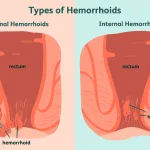Ever woken up with that familiar ache at the base of your skull, rubbing your neck as if it’s a stubborn knot that just won’t let go? You try stretching, you switch pillows, you even swear off caffeine for a week—yet the tension lingers. Sound familiar? Well, before you swear off life itself, consider this curveball: your jaw might be the real troublemaker.
I know, I know—when you think “TMJ,” a clicking or popping jaw probably comes to mind first. But here’s the kicker: temporomandibular joint (TMJ) disorders often manifest beyond the jaw. They can drag your neck into the drama, too. If you’ve ever wondered, “can TMJ cause neck pain?” the answer is a resounding yes. And that’s just the tip of the iceberg.
According to the Mayo Clinic, TMJ disorders can present with a variety of symptoms—including neck pain—because the jaw and neck muscles are so closely connected. Today, let’s unravel the mystery of tmj neck pain together. We’ll dive into why your jaw and neck are unexpected best friends (or frenemies), how to spot those sneaky tmj neck pain symptoms, and—best of all—simple yet powerful “stretches for TMJ neck pain” you can do right at home. I’ll also share stories, pro tips, and gentle reminders to breathe.
Understanding TMJ and Its Impact on the Neck
What Is TMJ?
Picture this: two intricate hinges sit just in front of your ears, connecting your lower jaw (the mandible) to your skull. That’s your TMJ—temporomandibular joint—for you. These joints allow you to open wide for a yawn, chew your favorite snacks, and flash that million-dollar smile.
Each TMJ is a marvel of engineering: a small disc of cartilage cushions the bones, muscles control movement, and ligaments keep everything in place. When these parts operate harmoniously, life is grand. But when they don’t? Cue pain, stiffness, and frustration.
How TMJ Disorders Affect the Neck
Here’s where things get juicy: the muscles around your TMJ are intimately connected to muscles in your neck and shoulders. Imagine a spider’s web—tug one strand, and the whole network vibrates. Similarly, tension in your jaw muscles can ripple down into your neck, leading to stiffness and discomfort.
This phenomenon, called referred pain, tricks your brain into perceiving pain in areas far from the actual source. Many people ask, “can TMJ cause neck and shoulder pain?” The short answer: absolutely. Those tight jaw muscles are like tugging on a thread that tightens up your neck and even your upper back.
Why Your Neck Pain Might Be More Than Just a Crick
Before you blame bad posture alone, consider these questions:
- Do you grind or clench your teeth, especially at night?
- Have you noticed clicking, popping, or locking when moving your jaw?
- Do headaches or earaches accompany your neck stiffness?
If you answered “yes” to any of these, your neck pain might be a guest star in a TMJ disorder drama.
Common TMJ Neck Pain Symptoms
Recognizing the Signs
We all interpret pain differently. For some, it’s a dull throb; for others, a sharp stab. But TMJ-related neck pain often shares these hallmarks:
- Jaw stiffness or limited movement: Difficulty opening wide or chewing tough foods
- Clicking or popping sounds: Audible when opening or closing the mouth
- Ear pain or ringing: Without an ear infection, often accompanied by neck stiffness
- Headaches: Particularly around the temples, creeping down into the neck
- One-sided neck discomfort: You might ask, “why is my pain only on one side?” That’s can TMJ cause neck pain on one side at play
- Shoulder tension: A sense of heaviness or tightness around the shoulder blades
Case Study: When Carol’s Neck Ache Revealed a Hidden TMJ Disorder
Let me share a quick story. My friend Carol spent months battling an unexplained neck ache. She tried chiropractic adjustments, new pillows, and even massage guns—nothing stuck. Then one evening, while chatting over coffee, she mentioned jaw pain when she yawned. That “aha” moment led her to a dentist specializing in TMJ, who fitted her with a simple night guard. Within weeks, her neck relief began—no fancy gadgets required.
Diagnosing TMJ-Related Neck Pain
Self-Assessment Techniques
Before booking appointments, you can perform a few gentle checks at home:
- Jaw Movement Test: Open your mouth slowly. Any clicking, popping, or pain? Note it.
- Palpation: Place your fingers in front of your ears, gently open and close your mouth. Do you feel or hear anything unusual?
- Posture Check: Stand sideways in a mirror. Is your head forward, shoulders rounded? That forward head posture often aggravates TMJ issues.
Seeking Professional Evaluation
If self-tests hint at TMJ involvement, it’s time to level up with expert eyes. A dentist or oral/maxillofacial specialist can:
- Perform a thorough jaw and neck examination
- Take imaging—X-rays or MRI—to view joint structure
- Assess bite alignment and wear on your teeth
- Recommend personalized treatments, from splints to physical therapy
Effective Stretches and Exercises for TMJ-Related Neck Pain
Warm-Up: Preparing Your Muscles
Before diving into stretches, warm up your muscles with a moist heat pack on your jaw and neck for 5–10 minutes. Warm muscles respond better to stretching and are less prone to strain.
Neck-Focused Stretches
These moves target tension built up from TMJ-related muscle tightness:
- Chin Tucks: Sit tall, tuck your chin straight back (imagine making a double chin), hold for 5 seconds, repeat 10 times. This lengthens the deep neck flexors and counteracts forward head posture.
- Neck Rotations: Slowly turn your head to the right until you feel a gentle stretch, hold 5–7 seconds, then to the left. Repeat 8–10 times per side.
- Side Neck Bends: Tilt your right ear toward your right shoulder, hold for 10 seconds, then switch sides. Repeat 5 times each side.
- Levator Scapulae Stretch: Turn your head 45° to the right, then tuck your chin and gently pull your head down with your right hand. Hold 10 seconds, switch sides.
Jaw-Focused Exercises
Your jaw deserves some love, too. These exercises can reduce tmj neck pain symptoms by improving mobility and reducing muscle overactivity:
- Relaxed Jaw: Rest your tongue on the roof of your mouth, keep your teeth slightly apart, and breathe slowly for 1–2 minutes whenever you feel tension creeping in.
- Goldfish Exercise (Partial Opening): Place one finger on your TMJ (just in front of your ear) and another finger on your chin. Gently open your mouth halfway, then close it. Repeat 6–10 times. This promotes smooth joint movement.
- Resisted Mouth Opening: Put your thumb under your chin. Open your mouth slowly while your thumb provides slight resistance—hold 5 seconds, repeat 5 times. Strengthens jaw-opening muscles.
- Resisted Mouth Closing: Place two fingers on your chin. Try to close your mouth against this resistance. Hold 5 seconds, repeat 5 times. Builds control in closing muscles.
Incorporating Stretches into Daily Life
My favorite trick? Pair these exercises with everyday activities. Do chin tucks during Zoom calls. Practice relaxed jaw breathing while making your morning coffee. Consistency—just a few minutes daily—yields real change over time.
When to Consult a Professional
Red Flags You Shouldn’t Ignore
Self-care is golden, but don’t delay seeking help if you notice:
- Intense pain lasting more than 2 weeks
- Jaw locking open or closed
- Sudden onset of severe pain after trauma
- Hearing loss, ringing in the ears, or dizziness along with neck pain
- Difficulty swallowing or speaking
What to Expect at Your First Appointment
Your healthcare provider may:
- Review your medical and dental history
- Examine jaw and neck range of motion
- Recommend imaging (X-ray, MRI, CT scan)
- Discuss treatment options: splints, manual therapy, medication, or referral to a physical therapist
Preventing TMJ-Related Neck Pain
Optimizing Posture and Ergonomics
Let’s face it: our tech-heavy lives encourage forward head posture and rounded shoulders— prime breeding ground for TMJ and neck strain. Simple tweaks can make a world of difference:
For a deeper dive into workstation setup and posture exercises, check out our full guide on Posture Tips for Neck Pain Relief.
- Screen Height: Position your monitor so the top of the screen aligns with eye level. No looking down!
- Chair Support: Use a lumbar pillow or rolled towel to maintain your spine’s natural curve.
- Head Alignment: Imagine a string pulling the crown of your head upward—ears in line with shoulders.
- Frequent Breaks: Every 30–45 minutes, stand up, stretch, and do a quick jaw relaxation.
Stress Management Techniques
Stress is the silent saboteur of relaxed muscles. When life’s demands ratchet up, our jaw and neck bear the brunt. Here are my go-to strategies:
- Mindful Breathing: Inhale for 4 counts, exhale for 6. Repeat 5 times to calm nervous tension.
- Progressive Muscle Relaxation: Tense then release muscle groups—face, jaw, neck, shoulders—holding tension for 5 seconds before relaxing.
- Guided Imagery: Close your eyes and imagine a warm wave washing over your neck and jaw, melting tension away.
- Movement Breaks: A quick walk, gentle yoga, or even dancing in your living room can reset tight muscles.
Lifestyle Modifications for Long-Term Relief
Big changes often start with small habits. Try these:
- Diet Tweaks: Cut down on chewy, tough foods—think bagels and steak. Opt for softer options like quinoa bowls or smoothies.
- Mindful Eating: Chew slowly and evenly on both sides to avoid overloading one TMJ.
- Night Guard: If you grind your teeth at night, talk to your dentist about a custom mouthguard to protect your jaw.
- Hydration: Drinking water keeps tissues supple and muscles less prone to spasm.
Comparing TMJ Neck Pain Causes
| Cause | Main Symptoms | Self-Care Tips |
|---|---|---|
| Jaw Grinding (Bruxism) | Headaches, jaw soreness, neck stiffness | Relaxation exercises, mouthguard, stress reduction |
| Poor Posture | One-sided neck ache, upper back tension | Ergonomic setup, chin tucks, frequent breaks |
| Arthritis in TMJ | Joint pain, limited mouth opening | Gentle jaw stretches, heat/cold packs, anti-inflammatory diet |
| Stress-Induced Clenching | TMJ tenderness, shoulder pain, headaches | Mindfulness, breathing exercises, progressive relaxation |
| Trauma or Injury | Sharp pain, swelling, reduced mobility | Seek immediate medical care, follow-up therapy |
Expert Insights: Why Addressing TMJ Early Matters
Dr. Jane Mitchell, a leading TMJ specialist, says, “Early intervention can prevent the cascade of muscle compensation that spreads tension from the jaw to the neck and shoulders. Patients who start simple jaw exercises and ergonomic changes often avoid more invasive treatments down the line.”
Conclusion
Wow, we’ve covered a lot of ground! From understanding the surprising link between your jaw and neck to mastering targeted “stretches for TMJ neck pain,” you now have a toolbox of strategies at your fingertips.
Remember, your journey to relief is a marathon, not a sprint. Consistently practicing these exercises, making ergonomic tweaks, managing stress, and—when needed—seeking professional care will go a long way toward calming that nagging neck ache.
Got your own TMJ neck pain story or a favorite stretch that works wonders? I’d love to hear about it in the comments. Let’s keep this conversation going—because together, we can help everyone say goodbye to that stubborn neck tension once and for all!


















Leave a Reply
You must be logged in to post a comment.